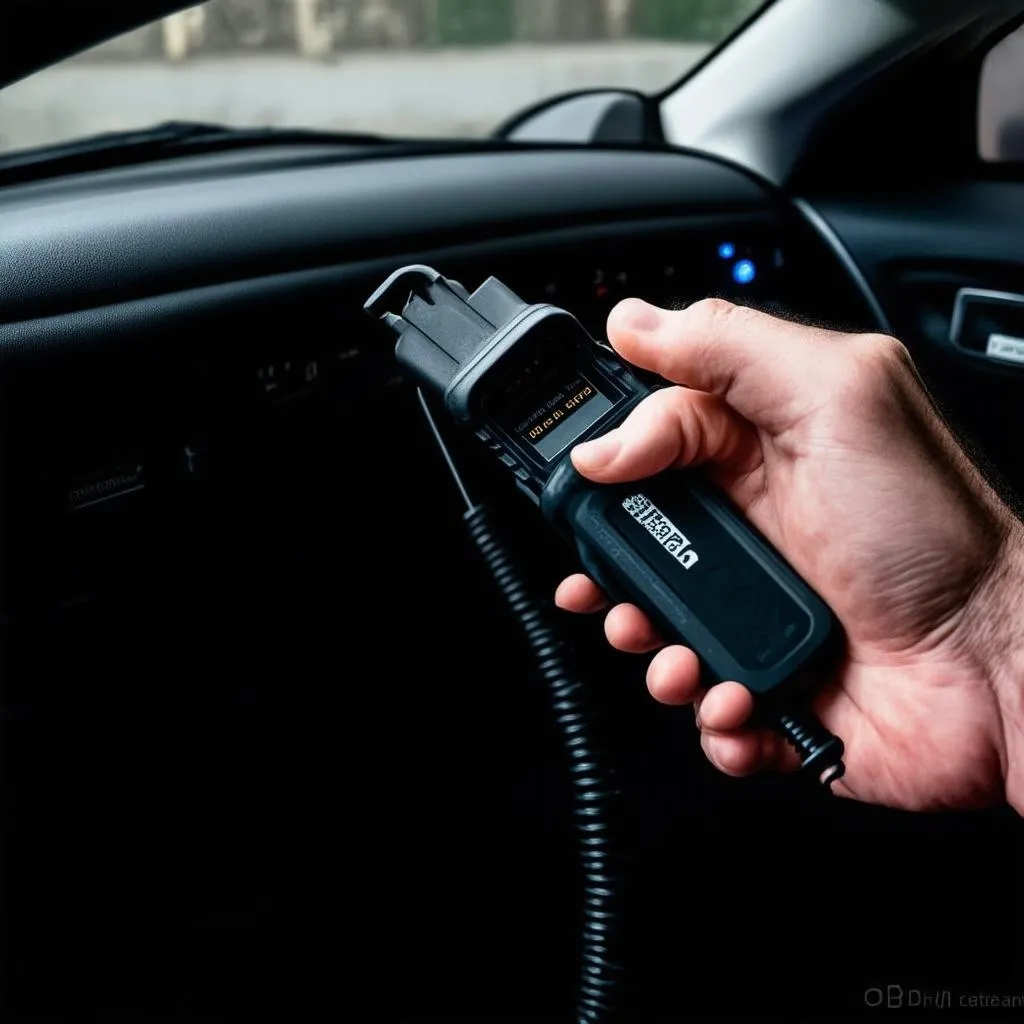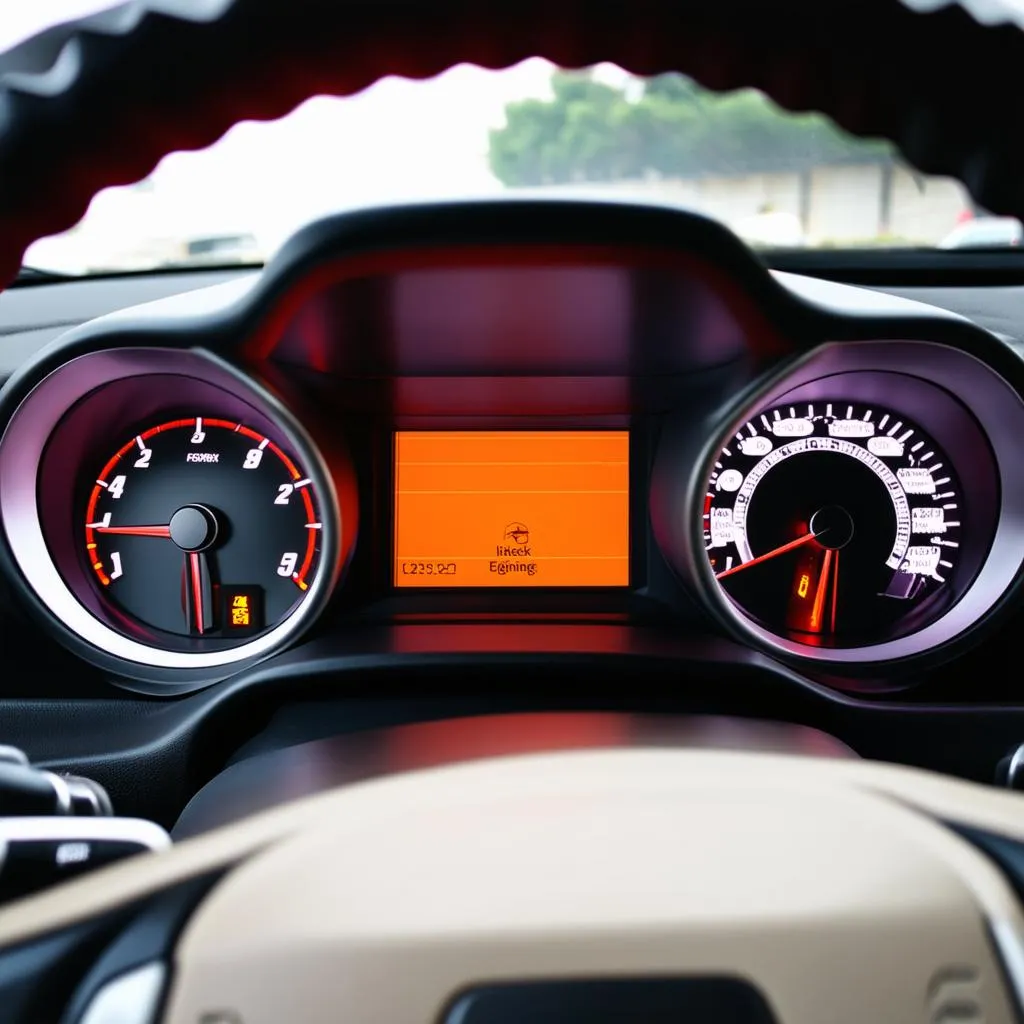Imagine this: You’re cruising down the Pacific Coast Highway in your Ford Mustang, California sun warming your face, when suddenly – bam! – the dreaded Check Engine light pops up on your dashboard. Your heart sinks. Is it something serious? Do you need to pull over immediately? Before you panic, there’s a good chance it’s something you can potentially diagnose and even fix yourself using a handy tool: the OBD II scanner.
What Does Erasing OBD II Codes Really Mean?
Before we dive into the “how-to,” let’s understand the “why.”
Understanding OBD II Codes and Your Car’s Brain
Think of your car’s computer system as its brain. When something malfunctions, this “brain” stores a code in its memory, like a little post-it note, indicating the problem area. This code is what your OBD II scanner reads. Erasing these codes is essentially like hitting the “clear” button.
“Many car owners mistakenly think erasing codes solves the issue,” says automotive expert, Dr. James O’Connell, author of “The Car Whisperer.” “It doesn’t. It simply clears the message. If the underlying problem persists, the code will return.”
The Importance of Proper Diagnosis
Just like treating a headache with painkillers without knowing the cause can be dangerous, erasing codes without understanding the root problem can lead to more serious issues down the road. Ignoring a persistent oxygen sensor issue, for example, can ultimately damage your catalytic converter – a costly repair!
So, How Do You Erase OBD II Codes?
Here’s a step-by-step guide:
- Locate Your OBD II Port: This port is typically located under the driver’s side dashboard, often near the steering column.
- Plug in Your OBD II Scanner: Ensure the scanner is compatible with your car make and model.
- Turn On Your Ignition: Don’t start the engine, just turn the key to the “on” position.
- Access the “Read Codes” Function: This will display any stored trouble codes. Write these down! This information is crucial for troubleshooting.
- Select “Erase/Clear Codes”: The scanner will then communicate with your car’s computer and clear the codes.
- Verify Code Erasure: Rerun the “Read Codes” function to ensure the codes have been successfully cleared.
When Is It Okay to Erase OBD II Codes?
Erasing codes is acceptable in the following situations:
- After Completing a Repair: Once you’ve fixed the problem, you’ll need to clear the code to turn off the Check Engine light.
- To Confirm Intermittent Issues: If you suspect a temporary glitch, like a loose gas cap, erasing the code and seeing if it returns can be helpful.
What If the Code Returns?
A recurring code signals a persistent problem that needs professional attention. Don’t ignore it! Schedule an appointment with a trusted mechanic, especially if you experience performance issues or other warning signs.
FAQs About Erasing OBD II Codes:
Can I erase OBD II codes myself?
Absolutely! OBD II scanners are readily available online and at auto parts stores.
Will erasing codes void my car warranty?
No. Erasing codes themselves won’t void your warranty. However, failing to address a serious issue indicated by a code might cause problems later.
How often should I erase OBD II codes?
Ideally, you should only erase codes after fixing the underlying problem or confirming an intermittent issue.
Need Help Diagnosing Your Car Troubles?
Understanding and addressing your car’s OBD II codes is crucial for maintaining its health and performance. We have a team of automotive experts available 24/7 to assist you with any questions or concerns you may have. Contact us on WhatsApp at +84767531508 for personalized guidance on diagnostic tools, code interpretation, and finding reputable mechanics in your area.
 OBD2 Scanner plugged into a car's OBD2 port
OBD2 Scanner plugged into a car's OBD2 port
 Mechanic using a laptop for car diagnostics
Mechanic using a laptop for car diagnostics
 Check engine light illuminated on a car's dashboard
Check engine light illuminated on a car's dashboard
We encourage you to explore our other articles for more in-depth information on OBD II codes, scanner reviews, and car maintenance tips. You can find articles on how long OBD codes are stored here, or even explore OBD replacement options for specific models like the E36 BMW here. For the tech-savvy, we also review the best Windows OBD software here and discuss specific fault code readers like the Argos OBD here. Remember, knowledge is power when it comes to keeping your car running smoothly.